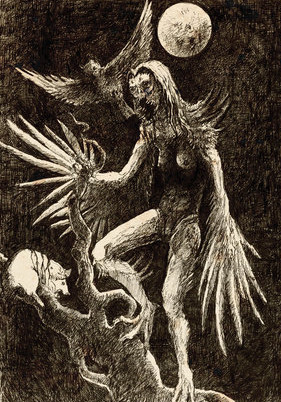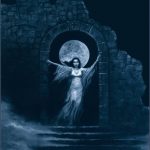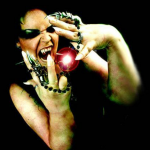
In an old text written in Latin, Descriptio Antiqui et Hodierni Statue Moldavie translated into Romanian and published in Bucharest in 1973, it is said that people in the Romanian regions of Moldavia and Transylvania believed in the strige (plural: strigele), a witch who killed infants in their cradles.
Like the witches of Western Europe and the vjestitza, a woman suspected of being such a witch was often subjected to a trial where she was bound and tossed into a deep water. (I base this mostly on a footnote in the article The Romanian Folkloric Vampire by Jan Perkowski, published in the September 1982 issue of East European Quaterly.)
In the article The Vampire in Romania by Agnes Murgopci, published in the December 1926 issue of Folk-Lore, it is said that the “”strigele are either the spirits of living witches or of dead witches who appear as little points of light in the air. They sometimes come together in groups of seven or nine and dance together.” After they break off their dance, they do mischief to human beings.
The Romanian name strigoi, which can mean either a “living vampire” (strigoi viu) or a “dead vampire” (strigoi mort) is derived from the strige.
the Romanian living vampires rarely drink blood, but they can rob people, animals, and crops of their vitality to enhance their own. They can also leave their own physical bodies at night to travel in animal form such as that of a wolf, a dog, a cat, a hen, or a raven, or as a small glowing ball or spark of light.
People who are born with a caul (fetal membrane still attached to the head), with a little tail, or some other such peculiarity were believed to be such living vampires.
Living vampires usually become undead vampires after they die unless their corpses are treated at burial by such means as used to destroy the undead vampire, i.e., a stake driven into the heart, decapitation, cremation, etc.








